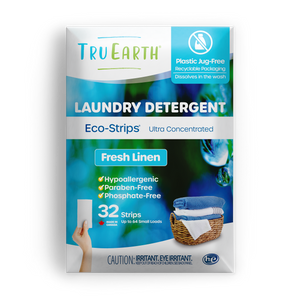Doing laundry is a regular household chore that requires careful consideration to ensure clean and fresh clothes. One common question that arises when doing laundry is how many pieces of clothing constitute a load.
Understanding and properly managing the concept of loads can help optimize your laundry routine and achieve efficient and effective washing results. In this article, we will jump into the factors to consider when determining a load of laundry, explore the different load sizes, and provide practical tips to help you make the most out of your laundry day.

Factors to Consider for Determining a Load Size
Determining the appropriate load size when doing laundry is essential for achieving optimal cleaning results and maintaining the efficiency of your washing machine. Several factors come into play when determining the load size, including the fabrics' type and weight, the washing machine's capacity, and the efficiency of water and detergent usage.
Understanding and considering these factors ensures that your laundry loads are appropriately sized for effective cleaning and resource conservation. In this section, we will explore the key factors to consider when determining a load size, helping you make informed decisions and improving your laundry routine.
Fabric Type and Weight
The type of fabric and its weight play a crucial role in determining the number of clothing pieces that make up a load. Heavier fabrics, such as denim or towels, require more space in the washing machine, as they tend to absorb more water. On the other hand, lighter fabrics, like t-shirts or undergarments, can be packed more tightly.
Washing Machine Capacity
Each washing machine has a specified capacity, typically measured in pounds or kilograms, indicating the maximum weight of laundry it can handle. It is important to consult your washing machine's user manual or check its specifications to determine its capacity. This capacity serves as a guideline to help you determine the appropriate load size.
Water and Detergent Efficiency
Overloading the washing machine can hinder its performance and affect the efficiency of water and detergent usage. It is important to strike a balance between maximizing the load size and ensuring sufficient space for proper water circulation and detergent dispersion. By maintaining an appropriate load size, you can optimize water and detergent usage, saving resources and achieving cleaner results.
Different Load Sizes for Washing Clothing
When it comes to doing laundry, understanding the appropriate load sizes for washing clothing is essential. The size of your laundry load can impact the cleanliness of your clothes, the efficiency of the washing process, and even the longevity of your washing machine.
We will explore the different load sizes for washing clothing and provide helpful tips to help you achieve optimal results with each wash.
Small Load
A small load typically consists of 1 to 3 kg (2 to 6 pounds) of laundry. This load size is suitable for situations when you have only a few garments to wash or when you want to segregate specific items, such as delicate fabrics or heavily soiled clothes. It is important to avoid overcrowding the machine, allowing ample space for effective cleaning.
Medium Load
A medium load generally ranges from 3 to 5 kg (6 to 11 pounds) of laundry. This load size is ideal for everyday laundry needs, accommodating a moderate amount of clothing. It provides a balance between maximizing the machine's capacity and ensuring proper cleaning results.
Large Load
A large load typically involves 5 to 7 kg (11 to 15 pounds) of laundry. This load size is suitable for situations when you have a considerable amount of laundry to wash, such as during busy weeks or when washing items from multiple family members. However, it is important to avoid overstuffing the machine to maintain optimal cleaning performance.

Tips for Efficiently Managing Laundry Loads
Managing laundry loads efficiently is essential for keeping your clothes clean, maintaining the lifespan of your washing machine, and conserving energy and water. With the right strategies, you can streamline your laundry routine and ensure that each load is washed effectively.
Here's how to make your laundry routine more efficient and effective.
Sort Your Laundry
Properly sorting your laundry by color, fabric type, and washing instructions can help optimize load sizes. This practice ensures that similar items are washed together, preventing color bleeding or damage to delicate fabrics. Sorting also allows you to gauge the appropriate load size for each batch of laundry.
Don't Overload the Machine
Avoid overstuffing the washing machine, as it can lead to poor cleaning results, excessive wrinkling, and potential damage to both the machine and the clothing. It is important to leave enough space for proper water circulation and movement during the wash cycle.
Use the Correct Amount of Detergent
Using the right amount of detergent is crucial for effective cleaning and to avoid product buildup or residue on the clothes. Follow the manufacturer's guidelines and adjust the detergent quantity based on the load size and soil level of the garments.
Regular Maintenance
To ensure optimal performance of your washing machine, conduct regular maintenance, such as cleaning the drum and filters, to prevent any blockages or malfunctions that may affect the machine's efficiency.
Understanding the Ideal Number of Clothing Pieces per Wash
Determining the appropriate load size for your laundry plays a vital role in achieving clean and fresh clothes. By considering factors such as fabric type, washing machine capacity, and water and detergent efficiency, you can make informed decisions when determining load sizes.
Proper load management ensures efficient and effective washing results while maximizing the machine's capabilities. With these tips and guidelines, you can optimize your laundry routine and enjoy clean, fresh-smelling clothes every time you do a load of laundry.


